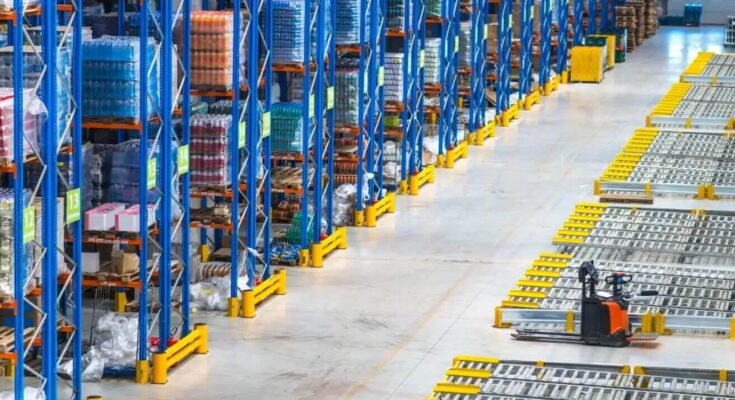Efficient storage of content is paramount for achieving maximum productivity and quick and easy access to essential materials. Unorganized content storage can result in lost time, wasted assets, and unnecessary frustration. Whether your content is digital or physical, an organized storage system means that workflows are easier and projects are turned over faster. With the right approaches, you can make sure that all content is readily accessible, efficiently organized, and securely stored. In this paper, we will discuss the ways that streamlined storage procedures can make content more accessible, save time that would be spent searching for a file, and make production more efficient. With the proper systems in place, content creators can spend more time producing content and less time worrying about clutter. Let’s get into the optimal strategies for efficient content storage.
Challenges of Disorganized Storage
One of the biggest time-wasters in content creation is cluttered storage. Whether your files are spread all over a bunch of devices or your paper is stacking up in a messy desk, the disorganization can be maddening. You spend your valuable time searching for the right asset—you know, that photo, draft, or research material. This endless searching not only saps your productivity but also raises your level of stress, leaving you less able to concentrate on doing your job. Worse, all that clutter will cost you lost files, missed deadlines, and duplicated effort that could have been avoided. The personal cost is real too: a messy space will cloud your creative thinking and leave you uninspired. If there is no system in place, content creation becomes less a matter of creation and more a matter of cleanup. Frustrating yourself with clutter ends up derailing your workflow and leaving you with less time to do what matters.
Choosing the Right Storage Tools
To overcome the challenges of disorganized content storage, it’s essential to implement the right storage tools that match your specific needs. Start by evaluating the types of content you handle most often—whether it’s digital files, physical documents, or media assets—and choose storage solutions that fit. For digital files, cloud-based storage platforms offer great flexibility, allowing you to access files from anywhere and keep everything in sync. Organizing files with clear naming conventions and structured folders will help you find assets quickly and easily.
For physical content, using filing cabinets, labeled boxes, and shelving units can help you keep papers and documents organized. Additionally, for larger or less frequently accessed materials, trusted storage facilities in Phoenix, AZ at NSA Storage offer secure, off-site storage options. These facilities can house bulk or archival materials, freeing up valuable space in your workspace while ensuring that content remains easily accessible when needed.
The key is to create a storage system that works for your content creation workflow. Streamlining the storage process will not only help you access files faster but also reduce stress and improve efficiency. By choosing the right tools for digital and physical content, you can maintain an organized system that allows you to focus on what matters most—creating and producing high-quality content without the burden of disorganization.
Organizing Content for Easy Access
Effective organization is key to ensuring that your content is easily accessible whenever you need it. Here are a few simple tips to help you get started:
- Create clear folder structures: Use a consistent naming system for your digital files to easily locate them later.
- Use cloud storage: Store your content in a reliable cloud service to ensure it’s accessible from any device, anytime.
- Label physical files clearly: Use color-coded labels or tags for physical documents to help identify and access them quickly.
- Utilize searchable metadata: For both digital and physical content, add searchable keywords or tags to improve findability.
- Regularly clean and organize: Set aside time to declutter your storage, removing outdated or irrelevant content.
By following these tips, you’ll streamline your content organization, making it faster and easier to find the materials you need, saving time and improving overall efficiency.
Organizing for Quick Access
Julia, a content manager for a growing marketing firm, faced constant frustration with her team’s disorganized content storage system. Documents, media assets, and project files were scattered across multiple drives, making it difficult to track down materials quickly. Deadlines were often missed because the team couldn’t find the assets they needed in time. This disorganization led to unnecessary stress, wasted hours searching for the right file, and even duplicated work.
Realizing that the company’s productivity was being affected, Julia decided to take action. She implemented a clear, cloud-based storage system with a well-structured folder hierarchy. Every team member had access to shared folders with consistent naming conventions, and all files were tagged for easy searching. Julia also introduced monthly digital clean-up sessions to ensure everything stayed organized.
The impact was immediate. The team could now access files within seconds, and project turnaround times improved dramatically. Productivity soared, and the constant stress of searching for misplaced assets disappeared.
Statistic: Companies that organize their content storage systems report a 20% increase in overall productivity.
Julia’s experience highlights the importance of organized content storage in a fast-paced work environment. By implementing a systematic approach to organizing digital assets, her team became more efficient and productive, allowing them to meet deadlines without the stress of searching for missing files. A clear, organized system not only saves time but also improves collaboration and overall business success.
Frequently Asked Questions
How does organized content storage improve workflow?
Organized content storage ensures that files, documents, and assets are easy to locate, reducing the time spent searching for materials. With a clear organization system, you can quickly find what you need, improving workflow efficiency and boosting productivity. This streamlined process helps you meet deadlines faster and reduces stress for your team.
What are the best storage solutions for content management?
The best storage solutions for content management depend on your specific needs. For digital content, cloud-based storage platforms offer flexibility and easy access from multiple devices. For physical materials or archived content, storage units in Phoenix, AZ provide a secure off-site solution, freeing up space in your office while maintaining easy access when necessary. Combining digital and physical storage options ensures a comprehensive, efficient system for managing all types of content.
How can I maintain an organized content system long-term?
Regularly declutter your storage system and update file structures to ensure it remains effective. Consistency is key, so make a habit of organizing new content as it’s created and scheduled reviews to keep everything in order.
Streamline Your Content Storage
The key to better workflow and productivity is efficient content storage. By developing a systematic system, less time will be wasted searching for your files, processes are streamlined, and your level of stress is minimized. Act today by choosing a storage solution that caters to your requirement—be it digital or physical, or a blend of both. The correct storage system will not only make your content accessible rapidly but will also enable your staff to function more efficiently and effectively towards better output and streamlined operations.




